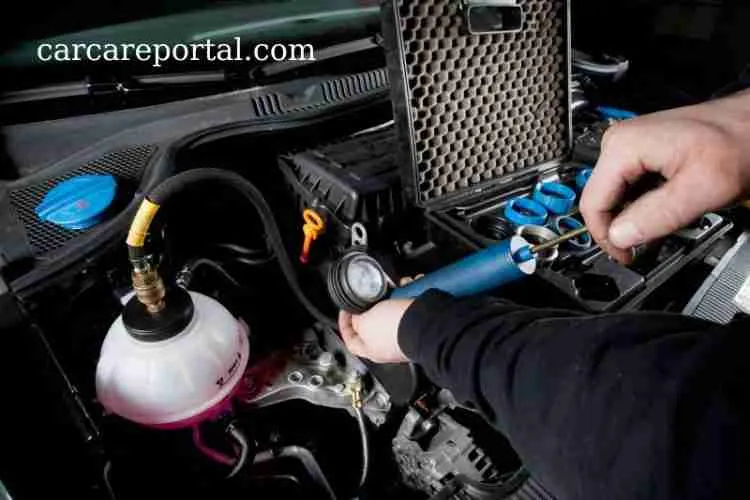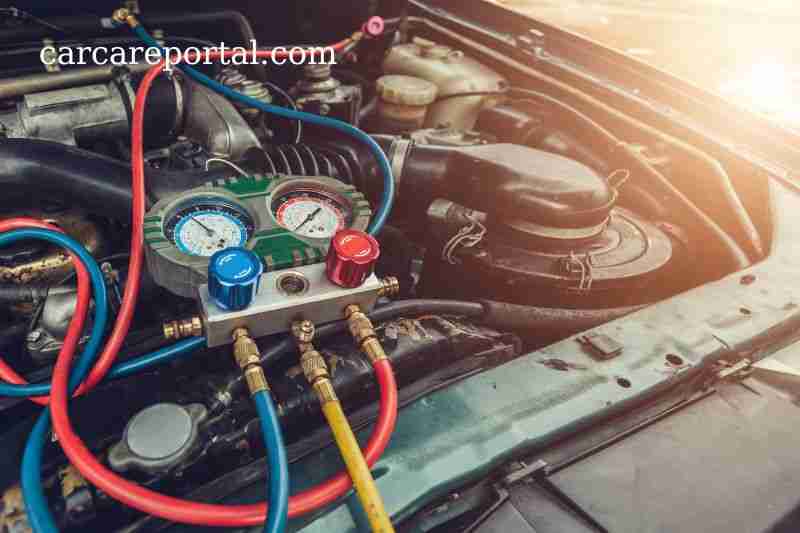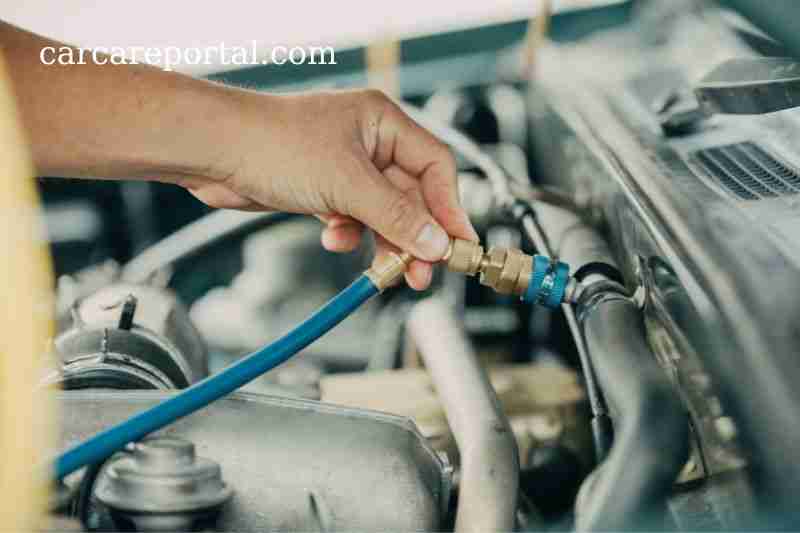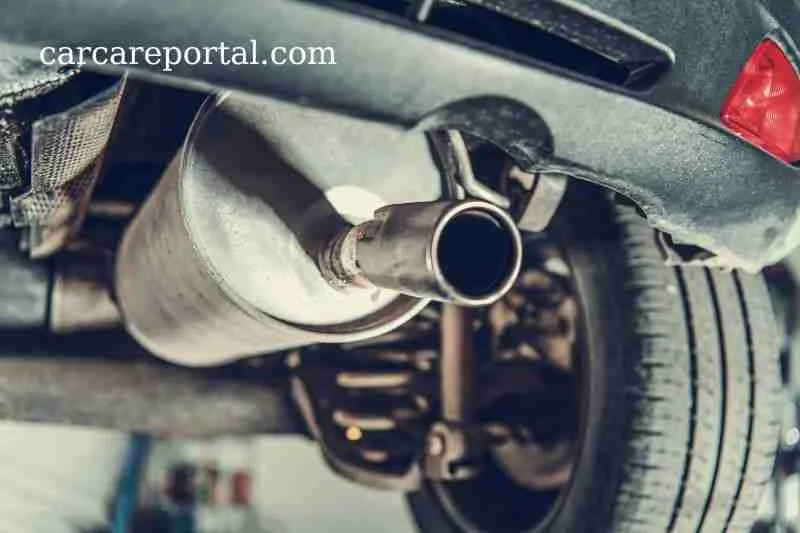Evaporative Emission System Leak Causes – Is Driving With an EVAP Leak Safe?

An evaporative emission system leak refers to a problem with a vehicle’s evaporative emissions system. This system is responsible for controlling the release of fuel vapors into the atmosphere. A leak in this system can cause an increase in the amount of fuel vapors released into the atmosphere, which can be harmful to the environment.
What is an EVAP Leak?
So, what exactly is an EVAP leak? An EVAP leak signal indicates a fault with the evaporative emission control system (EVAP). The EVAP is designed to keep gasoline fumes contained and out of the environment.
While pollution management is essential, the EVAP also prevents potentially hazardous vapors from entering the inside of your car. It may also prevent flammable gasoline from generating a more significant issue in your vehicle’s systems.
How does the EVAP system vent control work?
The Evaporative System (EVAP) captures and temporarily stores gasoline vapors from the gas tank in the charcoal canister. When the engine is running, and other circumstances permit, the fuel vapors from the charcoal canister are vented into the engine and burnt.
The Evaporative System is sealed, and many sensors enable the engine computer to identify a leak. P0455 – Evaporative Emission System Leak Detected (Major Leak) indicates that the engine computer has detected a large EVAP system leak.
Evaporative Emission System Leak Causes
It’s acceptable to disregard the check engine light when it appears on your dashboard. Various minor issues might cause the indicator to illuminate, and most drivers don’t have time to hurry to the shop or obtain diagnostic gear for home usage.
The issue is that a check engine light might be nothing, or it could be a critical warning indicator.
You can be sure by conducting diagnostics on your car. You may find out what code is causing the check engine light to illuminate by visiting your local technician or auto parts shop or connecting your diagnostic gadget.

What has to be double-checked?
The EVAP system is sealed, and the most frequent leak-causing components are the gas cap, vent valve, purge valve, and hoses and connections, as shown in the picture below.
The gas cap is the first item to look for with this code. Close it tightly if left open or loose, and the “Check Engine” light should reset itself after a few driving cycles.
The gas cap itself may sometimes fail. Scrutinize it; if there is evident damage to the cap or its rubber gasket, it must be replaced. If no evident fault is discovered, take your vehicle to a technician or dealer.
A mechanic would typically need to inspect the whole EVAP system using a sophisticated scan tool and testing equipment known as a smoke machine’ to locate a leak.
The “smoke machine” (seen in the picture) circulates the “smoke” throughout the system, allowing any leak to be visibly spotted.
The Signs of an EVAP Leak
Even before you run diagnostics, there are a few clues that your check engine light is caused by an EVAP leak rather than another problem. A symptom like the smell of gasoline is clear; however, the following might also occur:
- Having difficulty starting the engine
- Poor fuel economy
- Idling in a rough manner
- Engine performance has decreased overall.
Other cars may not exhibit symptoms, and other vehicle systems may not illuminate the check engine light.

EVAP Leak Codes That Are Common
For automobiles that exhibit indications of an EVAP leak, such as the check engine light, diagnostic tools may be used to determine what fault code is causing the light to illuminate. Different codes may appear depending on the vehicle’s OBD II system, the manufacturer and even the type of the automobile.
The following are examples of standard EVAP leak codes:
- P0442 Evaporative Emission (EVAP) System Detected Small Leak
- P0455 Detected Evaporative Emission (EVAP) System leak (large)
- P0440 System for Evaporative Emission (EVAP)
- EVAP Vent Solenoid Valve Control System P0446
- P0411 EVAP System Control Inadequate Purge Flow
EVAP codes range from 0440 to 0457. Therefore, many more codes to look up depending on your car and its issue.
However, if your car returns one (or more) of these codes, it may not be a simple remedy. More information is required to assess if the condition is severe or mild.
What Is the Source of EVAP Leak Codes?
Good news for customers whose cars exhibit no evidence of a gasoline leak: even if your check engine light is up and you discover an EVAP code through an OBD II system, it may be a straightforward remedy. In other circumstances, however, this may not be the case.
Simple Repair: Remove the Gas Cap
The most typical reason for an EVAP code is that the gas cap is not secure. A gas gap that is even slightly slack, especially in contemporary automobiles, may enable fumes to enter the system.
While this is fantastic news for emissions enforcement and pollution management, it is discouraging for drivers to discover that the source of their worry and financial hardship was just a loose gas cap.
If you’ve recently filled your gas tank, ensure sure the cap is correctly attached and fully secured. Keep an eye on your fuel economy as well, since this might assist you in determining if gasoline is leaving.
Many drivers may repair the issue by tightening their gas cap (and removing the OBD II codes). However, if the check engine light does not turn off—that is, if the code clears and returns—this might signal a more serious issue with the evaporative emission system.
Other Fuel System Problems That Aren’t So Simple to Fix.
While a loose gas cap is a straightforward remedy, every other condition that causes an EVAP code is not. You may leak into your vehicle’s gasoline system, which may need more tests and cash flow.
Other concerns that may arise include:
- O-ring seals that have failed
- Pumps for detecting defective leaks
- An inoperable purge valve
- A suction hose or vent that is leaking
- Leaks from the EVAP canister
- Breakage or leaking elsewhere in the system

Is Driving With an EVAP Leak Safe?
Most drivers will disregard a check engine light until their next service appointment. However, since an EVAP leak may be severe and ecologically destructive, driving with the check engine light on is not a smart idea.
Whether your car has indications of a gasoline leak or not, get the codes retrieved as soon as feasible. Driving with a gasoline leak violates government pollution and emissions standards and puts you in danger of a car fire or other major mishap.
Meanwhile, ensure your fuel cap is secure and look beneath the hood for any obvious leaks. The gas cap is most likely the problem if you get a P0440, P0455, or P0457 code. Schedule a technician appointment as soon as possible to handle any other probable problems.
Repairing an EVAP Leak Costs
The cost to repair your automobile or pickup truck may vary from a few dollars to well over $400, depending on your vehicle’s code and which components are broken or damaged. For example, although changing a gas cap may cost $20 or less, acquiring a new EVAP canister is far more expensive.
For example, replacement gasoline canisters for Ram pickups cost between $200 and $300. Professional installation and servicing fees also vary greatly, which may significantly affect the overall cost of this sort of repair.
Repair expenses should be at the top of your car-buying concerns if you’re in the market for a vehicle. Even when looking at used automobile values where the sticker price is the most critical factor, researching each brand’s (or make and model’s) maintenance expenses is valuable.
Some cars, mainly Fords, feature fuel pump shutdown switches, which may influence fuel system performance and diagnostics. And it’s not only Ford that has idiosyncrasies that influence EVAP system diagnostics and repair. A total engine overhaul is preferable to hunting out every leak or weakness in certain circumstances.
If you must take your vehicle to a shop for diagnostics, you will be charged the shop fee for the diagnosis time and any physical examination of the vehicle. Fortunately, portable OBD II scanners are inexpensive enough to let you feel secure in your mechanic’s diagnostic (and the repair bill).
Whatever the cause of your vehicle’s EVAP system codes, locating and correcting the problem is critical. There are several excellent reasons to pay attention when your check engine light turns on, whether for your safety (and the safety of your passengers) or the total amount of pollution your car emits.
Read also:













No Comment